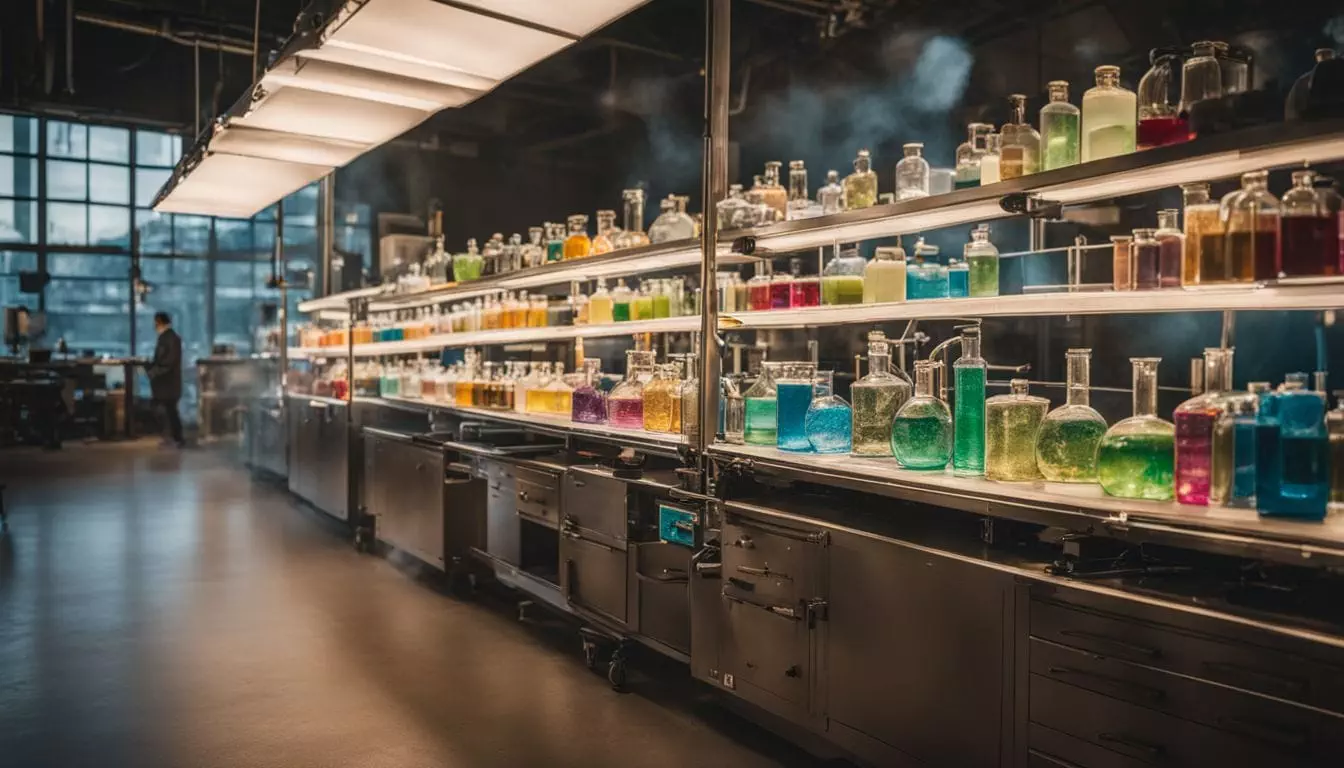Are you curious about how to create highly effective experiments using Python? Mastering experimental design is a critical skill for scientists, engineers, data analysts, and anyone working with research and development. Knowing how to properly structure and execute experiments can lead to more accurate and reliable results, helping to answer important questions and make informed decisions. Python offers a variety of tools and libraries that can assist in designing and conducting experiments, making it an invaluable resource for those in the scientific and technical fields. Understanding the essential roles of reliability engineer is also crucial in ensuring that experiments are conducted in a way that produces trustworthy and dependable results.
Python’s powerful libraries and intuitive syntax make it an ideal language for designing and analyzing experiments.
As a seasoned data scientist with over a decade of experience in statistical analysis and experimental design, I’ve witnessed firsthand the transformative impact of well-designed experiments.
Whether you’re working on product optimization, process improvement, or scientific research, understanding the principles of DOE and leveraging Python’s capabilities can help you make data-driven decisions and uncover valuable insights.
In this blog post, we’ll explore the fundamentals of experimental design and how to implement them using Python, empowering you to create experiments that yield reliable and actionable results.
Get ready to level up your experimentation skills and unlock the full potential of your data!
Key Takeaways
- Python is a powerful language for designing and analyzing experiments, with libraries like PyDOE, scikit-learn, and dexpy that make it easy to create experimental designs, such as factorial and fractional factorial designs.
- Python’s data manipulation (pandas) and visualization (matplotlib) libraries enable efficient collection, cleaning, and analysis of experimental data to uncover valuable insights and drive decision-making.
- Python supports advanced experimental designs such as Response Surface Methodology (RSM), Taguchi Methods, Mixture Designs, Optimal Designs, Split-Plot Designs, and Definitive Screening Designs, which can be implemented using libraries like scikit-learn, pyDOE2, statsmodels, skopt, and dexpy.
- Real-world case studies demonstrate the versatility of Python DOE across various domains, from optimizing industrial processes to enhancing product development, by identifying optimal settings for factors and evaluating the impact of different components, materials, and configurations on performance.
Understanding the Fundamentals of Python Design of Experiments (DOE)

Building on the introduction to Python Design of Experiments (DOE), let’s explore the fundamentals that make it such a powerful tool for optimizing experiments. At its core, DOE in Python allows you to strategically plan and analyze experiments using statistical principles.
By leveraging packages like PyDOE and scikit-learn, you can efficiently create experimental designs, such as factorial and fractional factorial designs, that maximize information gained while minimizing the number of runs.
These designs help you identify the most influential factors and their interactions, enabling you to optimize processes and products with confidence. With Python’s extensive libraries for data manipulation (pandas) and visualization (matplotlib), you can easily collect, clean, and analyze experimental data, uncovering valuable insights that drive decision-making.
Whether you’re a researcher in academia or an engineer in industry, mastering the fundamentals of Python DOE empowers you to conduct rigorous experiments and make data-driven discoveries.
Implementing Factorial Design Using Python

Implementing factorial design in Python is a straightforward process using the dexpy package. With factorial design, you can efficiently explore the effects of multiple factors on a response variable. Here’s how you can implement factorial design using Python:
- Install the dexpy package using pip, the Python package manager, by running
pip install dexpyin your command-line interface. - Import the necessary modules from dexpy, such as
factorialfor creating factorial designs andmodelfor analyzing the results. - Define the factors and levels for your experiment. For example, if you’re studying the impact of temperature and pressure on a chemical reaction, you might have two factors: temperature (with levels of 100°C and 150°C) and pressure (with levels of 1 atm and 2 atm).
- Create the factorial design using the
dexpy.factorial.build_factorial()function. Specify the factor names, levels, and the desired resolution (e.g., full factorial, fractional factorial). - Generate the design matrix using the
design.matrix_from_design()function, which returns a NumPy array representing the experimental runs. - Conduct the experiments according to the design matrix, collecting the response variable data for each run.
- Analyze the results using the
dexpy.modelmodule. Create a model object with the response data and the design matrix, and use methods likemodel.fit()to estimate the factor effects and interactions. - Interpret the model coefficients and perform statistical tests to determine which factors and interactions are significant. The
model.summary()method provides a comprehensive summary of the model results. - Visualize the factor effects using plots like main effects plots and interaction plots. The
dexpy.powermodule offers functions for calculating the power and sample size for factorial designs.
By leveraging the dexpy package, you can easily implement factorial designs in Python and gain valuable insights into the relationships between factors and the response variable. Next, let’s explore how Python can be used for more advanced experimental designs.https://www.youtube.com/watch?v=g4C7e7A_gYc
Leveraging Python for Advanced Experimental Designs
Python provides powerful libraries and tools for implementing advanced experimental designs. You can leverage Python’s capabilities to design and analyze complex experiments efficiently. Here are some ways to leverage Python for advanced experimental designs:
- Response Surface Methodology (RSM): Python’s scikit-learn library offers functions for RSM, allowing you to optimize process parameters and find the best operating conditions. RSM helps you model and analyze the relationships between input variables and response variables.
- Taguchi Methods: Python’s pyDOE2 library supports Taguchi methods, which focus on robustness and quality improvement. With Taguchi designs, you can minimize the impact of noise factors and identify optimal parameter settings for your experiments.
- Mixture Designs: Python’s statsmodels library provides tools for mixture designs, where the input variables are proportions of different components. Mixture designs help you explore the effects of varying component ratios on the response variables.
- Optimal Designs: Python’s skopt library offers Bayesian optimization techniques for finding optimal designs. Optimal designs aim to maximize the information gained from experiments while minimizing the number of runs.
- Split-Plot Designs: Python’s dexpy library supports split-plot designs, which are useful when some factors are harder to change than others. Split-plot designs allow you to efficiently study the effects of both hard-to-change and easy-to-change factors.
- Definitive Screening Designs: Python’s dexpy library also provides functions for definitive screening designs. These designs enable you to identify important factors and their interactions with a minimal number of runs, making them ideal for early-stage experimentation.
- Custom Design Generation: Python’s PyDOE library allows you to generate custom experimental designs based on your specific requirements. You can create designs with desired properties, such as orthogonality or balance, to suit your experimental needs.
By leveraging these advanced experimental design techniques in Python, you can efficiently plan and analyze experiments, saving time and resources while gaining valuable insights. Python’s extensive ecosystem of libraries and tools empowers you to tackle complex experimental challenges and make data-driven decisions. Next, let’s explore how Python can streamline data collection and analysis in experimental design.https://www.youtube.com/watch?v=SJ4E0tNrH2I
Data Collection and Analysis in Python Experimental Design
In Python experimental design, collecting and analyzing data is a breeze with the right tools. You can leverage libraries like NumPy for numerical computing and Pandas for data manipulation.
These powerhouses make it easy to wrangle your experimental results into tidy datasets. Plus, you’ve got visualization libraries like Matplotlib and Seaborn at your fingertips, letting you create stunning graphs and charts to showcase your findings.
But here’s the real game-changer: Python’s machine learning capabilities. With scikit-learn, you can build predictive models based on your experimental data. Imagine uncovering hidden patterns and making data-driven decisions – all with a few lines of code! And don’t forget about SciPy for statistical analysis.
It’s like having a trusted sidekick, helping you calculate p-values, perform hypothesis tests, and more. Get ready to dive into the next section, where we’ll explore real-world applications of Python DOE through captivating case studies.
6. Case Studies and Practical Applications of Python DOE.
Case Studies and Practical Applications of Python DOE
After exploring the world of data collection and analysis in Python experimental design, let’s dive into the realm of real-world applications. Case studies and practical examples showcase the true power of Python DOE, demonstrating its versatility across various domains.
From optimizing industrial processes to enhancing product development, Python DOE underpins data-driven decision making.
Imagine you’re a process engineer at a manufacturing plant, tasked with improving production efficiency. By leveraging Python libraries like pyDOE and DoE.base, you can design and analyze experiments to identify the optimal settings for factors such as temperature, pressure, and flow rate.
Through factorial designs and response surface methodology, you uncover the sweet spot that maximizes output while minimizing waste. Similarly, if you’re a product developer in the tech industry, Python DOE empowers you to create robust and reliable designs.
By conducting carefully planned experiments, you can evaluate the impact of different components, materials, and configurations on product performance. Whether it’s optimizing battery life in mobile devices or ensuring the durability of wearable tech, Python DOE helps you make informed choices that lead to superior products.
Conclusion
In Python Design of Experiments, you’ve seen how this potent tool empowers you to optimize experimental setups and glean accurate insights. By leveraging packages like pyDOE and mastering experimental design principles, you can confidently tackle complex problems across science, engineering, and beyond.
So why not put your newfound Python DOE skills into practice? Dive in, experiment, and uncover groundbreaking discoveries that await you!
FAQs
1. What is Python Design of Experiments (DOE)?
Python DOE is a powerful tool for conducting experimental design and analysis using the Python programming language. It helps you plan and execute experiments efficiently, saving time and resources.
2. How does Python DOE help in data science and analytics?
Python DOE is a valuable asset for data scientists and analysts. It enables them to design experiments, collect data, and perform statistical analysis using Python libraries and functions. This leads to better insights and decision-making.
3. Can Python DOE be used in fields other than computer science?
Absolutely! Python DOE is applicable across various domains, including engineering, physics, social sciences, and more. Its versatility makes it a go-to choice for researchers and professionals in different fields.
4. Is Python DOE suitable for beginners?
Yes, Python DOE is beginner-friendly. Even if you’re new to Python or experimental design, you can easily learn and implement DOE techniques using the available documentation and resources.
5. What are some popular Python libraries for DOE?
Some widely used Python libraries for DOE include pyDOE, DoE, and dexpy. These libraries provide functions for generating design matrices, analyzing data, and visualizing results. They make the process of conducting experiments more efficient and streamlined.
6. How can I get started with Python DOE?
To get started with Python DOE, you’ll need a basic understanding of Python programming and statistics. You can install Python and the necessary libraries on your computer, explore the documentation, and start experimenting with sample datasets. There are also many online tutorials and courses that can guide you through the process.

